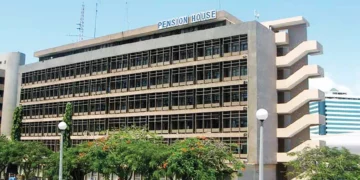Banking sector warned of liquidity, insolvency risks over elevated NPLs
A recent report co-authored by Dr. Richmond Atuahene and Isaac Kofi Agyei has sounded the alarm on Ghana’s banking sector, calling for decisive action to reduce its Non-Performing Loan (NPL) ratio from an alarming 24% to a more manageable 10%.
Titled ‘Thirsty Banks: 2023 Ghana’s Dilemma with High Cash Reserve Ratios,’ the report argues that any emerging or developing economy grappling with an NPL ratio exceeding 20% is on the brink of a crisis.
The authors assert that a resilient banking sector extends beyond mere profitability, warning that elevated NPLs can erode capitalization, trigger liquidity challenges, and even pave the way for insolvency in some institutions.
Their concerns are echoed by the Bank of Ghana’s Monetary Policy Committee (MPC) report released in March 2024, which highlighted a mixed outlook on key financial soundness indicators.
“The Bank of Ghana and commercial banks need to exert significant effort to reduce the current Non-Performing Loan (NPL) ratio from 24% to around 10% to fortify the banking sector’s resilience. A resilient banking sector encompasses more than just profitability; high NPLs can lead to poor capitalization among banks, liquidity challenges, and even insolvency for some institutions,” the report noted.
In addition to addressing the NPL issue, the report urges the Bank of Ghana to reconsider its stance on cash reserve ratios.
Specifically, it calls for a reassessment of the mammoth cash reserve ratios, taking into account the GHS50.6 billion of customers’ deposits that have been deployed to purchase restructured government bonds with an extended maturity period stretching until 2031.
The report’s recommendations come at a critical juncture for Ghana’s banking sector, underscoring the need for proactive measures to bolster resilience and navigate the complex financial landscape effectively.
As the sector grapples with mounting challenges, stakeholders are urged to heed these warnings and embrace reforms that prioritize stability, soundness, and sustainable growth.








